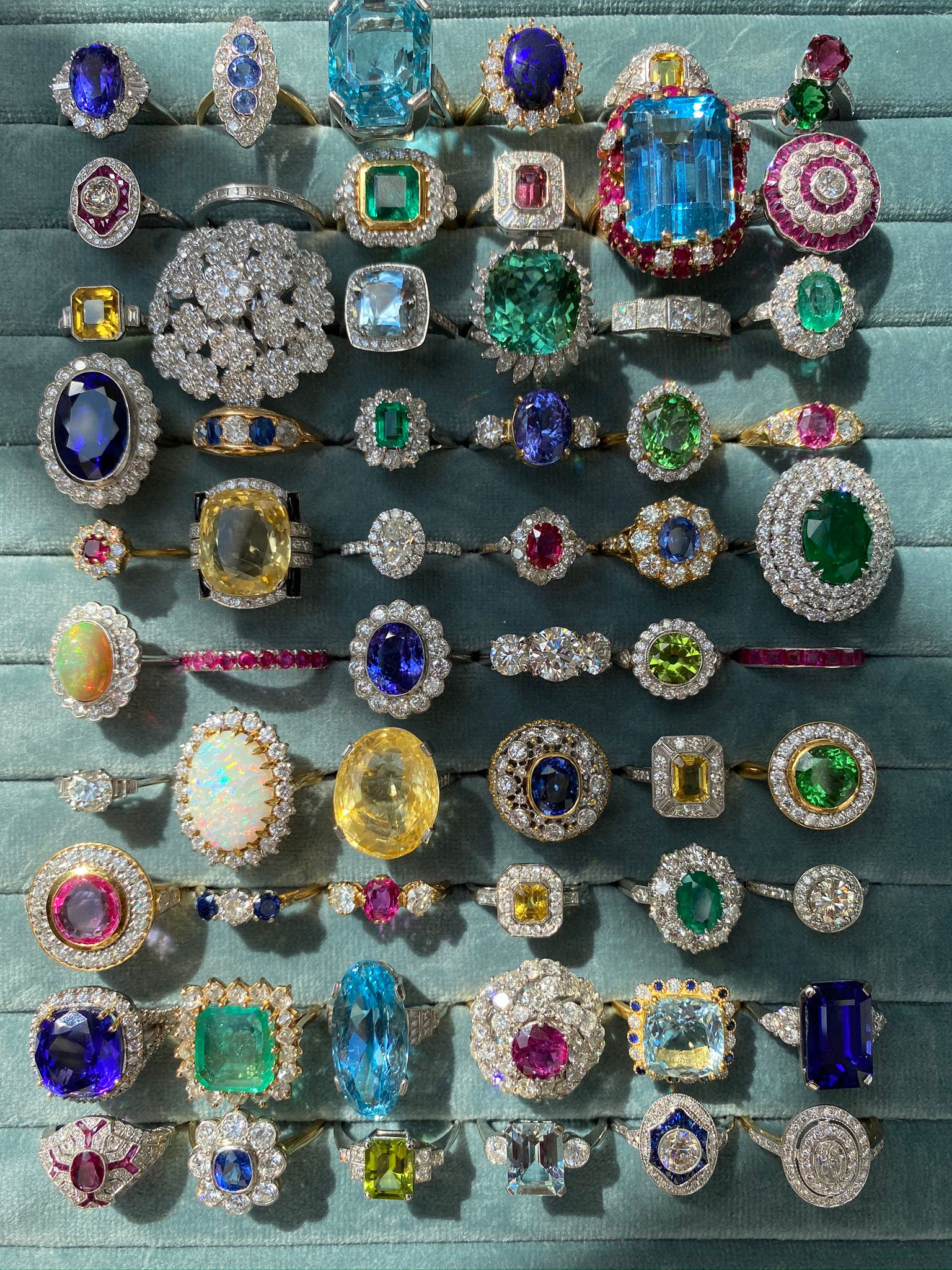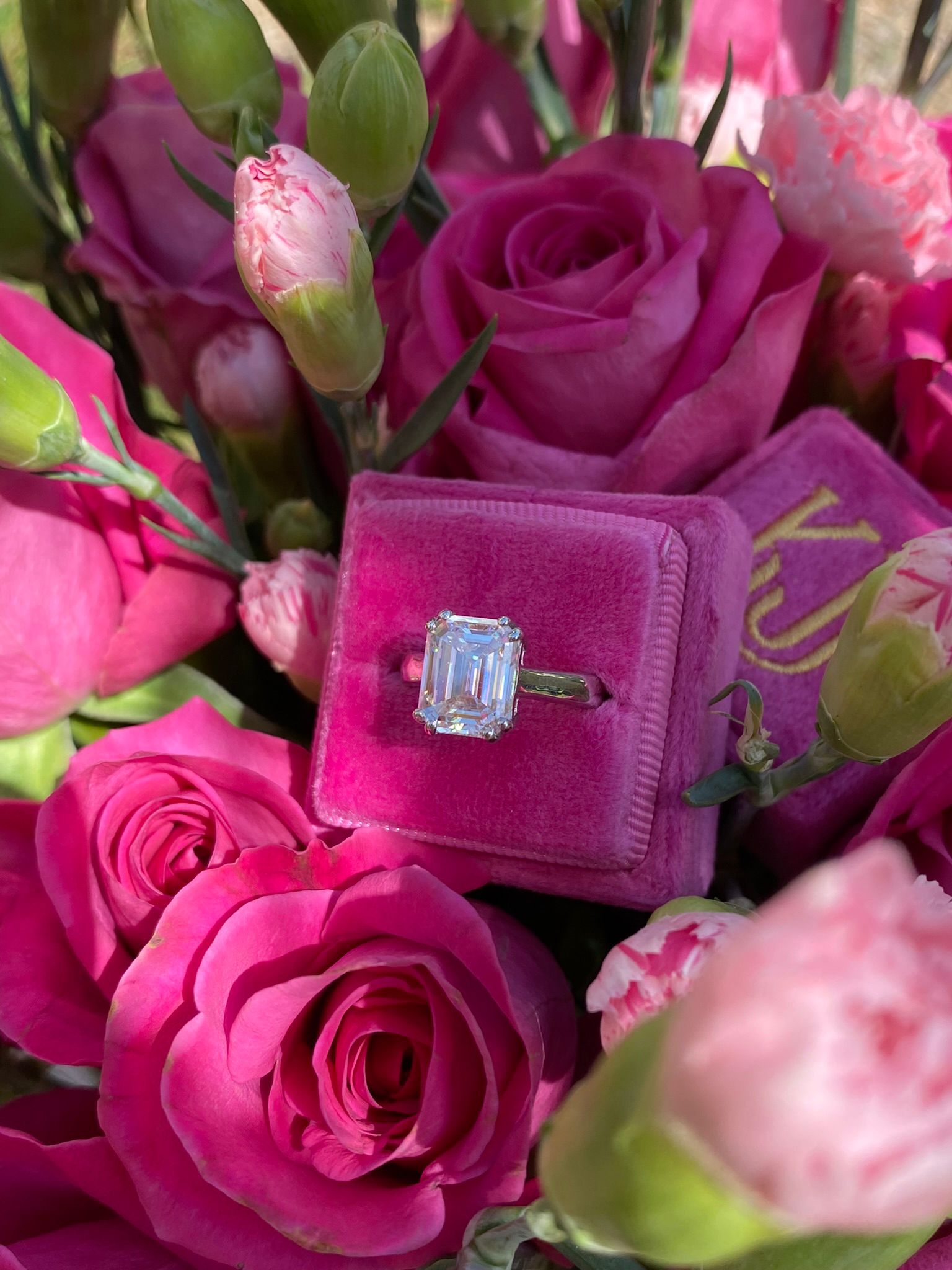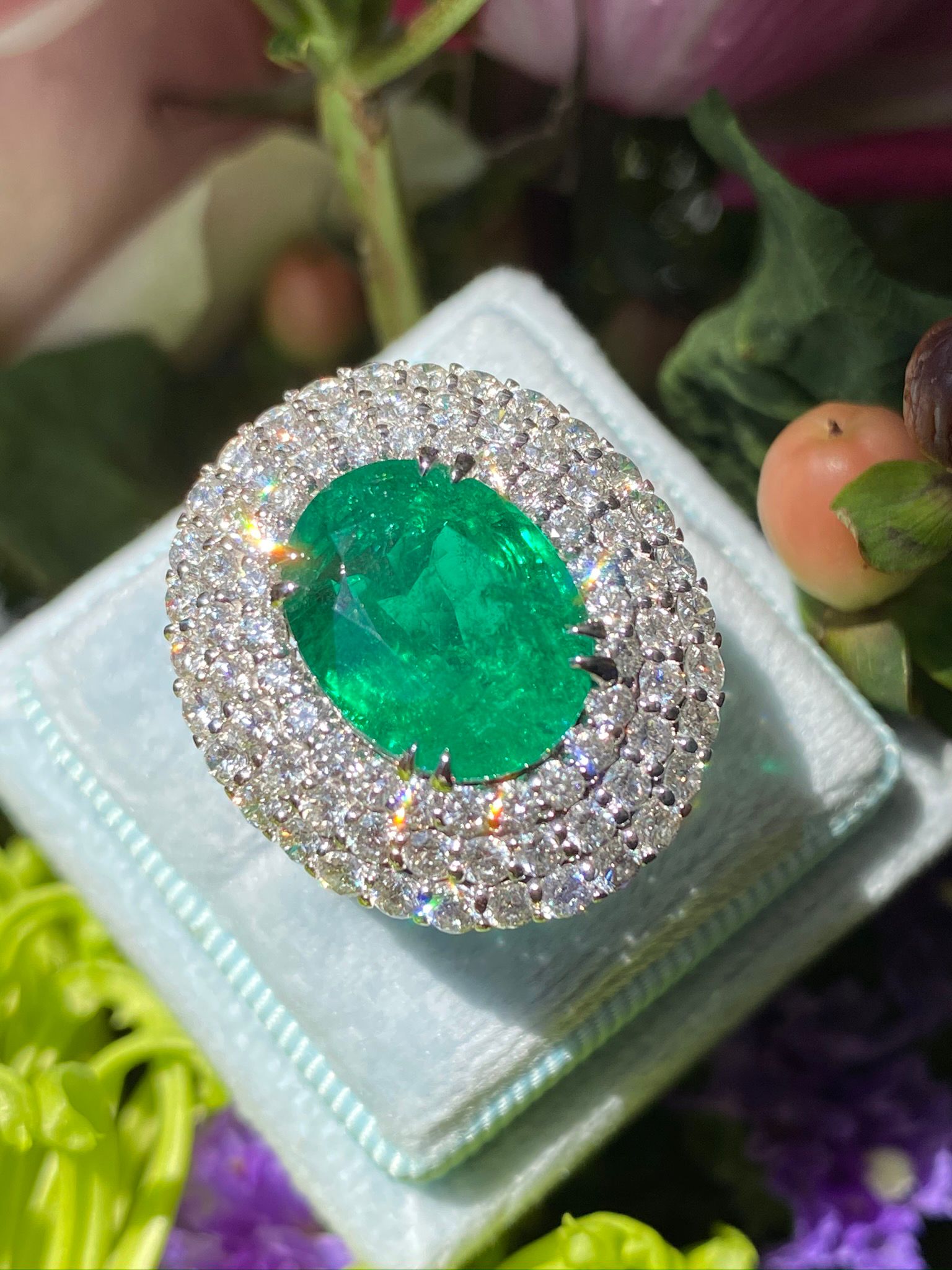Alternative Gems
Iolite

The name Iolite comes from the Greek word “ion,” which means violet. Scientifically, Iolite is actually known as Cordierite, a name which honours geologist Pierre Cordier. They are known for having a transparent, violet-blue colour, and therefore, being very similar to Tanzanite, but with a much longer history. Tanzanite and Iolite also share the unique property of strong pleochroism, which allows them to quite magically display different colours depending on which direction you view them in. An excellent light filter, the Vikings actually used very thin slices of Iolite to help them mitigate the sun’s glare while checking its position in the sky. Iolite is a 7-7.5 on the Mohs Hardness scale, which makes it very wearable, especially as a ring. However, it can be vulnerable to cleavage (or splitting) if exposed to rough and tumble wear. Best to save this rare and precious gem to more leisurely pursuits! Unlike almost all other blue gemstones such as Sapphires, Aquamarines and Tanzanites, Iolites are hardly ever treated to achieve or improve their unique colour. While they’re found in many places in the world including, Sri Lanka, Kenya, Madagascar and India, some experts believe that because a consistent enough source of fine quality gems has yet to be found, jewellery houses and designers have been wary to provide it to the mainstream, which means it remains a hidden secret for now, and even better, often very reasonably priced.
Labradorite

Labradorite is part of the Feldspar mineral group, which also includes a wide variety of other unique gems, including Moonstone, Amazonite and Sunstone. Discovered on the coast of Labrador in eastern Canada around 1770, it was aptly named Labradorite. Since then, it has also been found in a few other unique locations, including Finland and Madagascar. Some Labradorite also features beautiful iridescence, which occurs when light hits the fine layers that can form within the mineral creating rippling bands of colour, most often in blue and green. The trademark special effect is also named after the mysterious stone: “labradorescence.” If you’re a fan of mineral benefits, you can take note that Labradorites are often used for relieving stress and anxiety, restoring balance, and even increasing clairvoyance.
Jade

Jade is actually a generic term used for both Jadeite and Nephrite, two different species which are nearly identical. Technically, Jade is a mineral aggregate, and is known for its impeccable toughness, which can allow it to withstand a blow from a hammer (don’t try this at home!), and yet is “soft” enough to make it ideal for carvings and sculptures. While it’s been treasured for millennia by the Chinese Imperial courts and the South American Aztecs, it became especially popular in Western culture during the Art Deco period, when travel and interest in far off lands dramatically increased. While the most common colour for Jade is green (“Imperial Jade” is a term used to describe the most valuable, semi-transparent and vivid apple green specimens), it’s actually found in a wide variety of colours which are becoming increasing sought-after and very expensive, including lavender, grey, orange, red, white and black. Lavender Jade is the most popular and valued shade aside from green, and gets its pretty rosy colour from traces of manganese. A perfectly feminine and one-of-a-kind good luck charm!
Coral

Just like Pearls, Coral is considered an organic gem because it was once a living organism. One of the oldest known jewellery materials, it amazingly dates back approximately 30,000 years. Ancient cultures believed it had magical powers, and that wearing it could protect you from death. Just like most organic gems, it is very soft, which makes it ideal for carvings and cameos, but it must also be treated with care during wear and storage. Since it requires very specific conditions to grow, it can only be sourced in very few bodies of water around the world. The most historical source is the Mediterranean Sea, which is still considered the most valuable, however due to tragic over-harvesting and pollution, it is now also sourced in additional locations, including Japan, Malaysia and the Philippines. While it comes in a variety of natural colours from cream and pink to lavender and blue, one of the most valuable hues is a saturated red referred to in the trade as “oxblood.” Red coral cabochons sourced from the Med have been used in jewels and ornaments for thousands of years, and are a true treasure of the sea, and your jewellery box.




